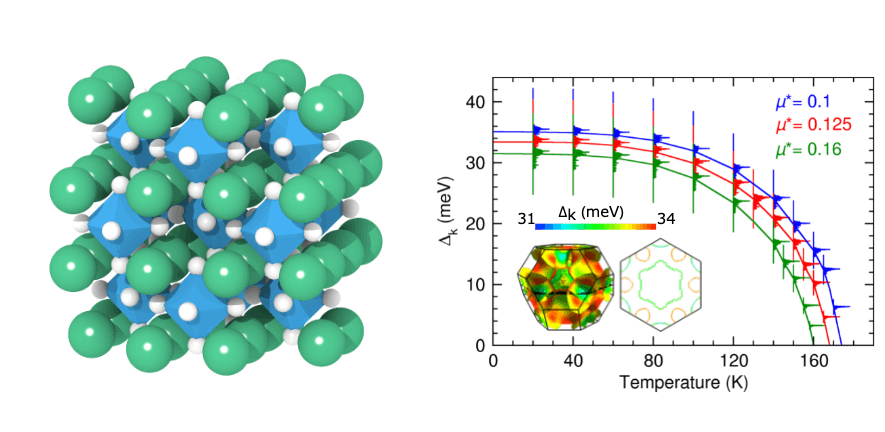
Submitted by Lewis Conway on Fri, 10/05/2024 - 10:32
Superconductors are a class of materials which show zero resistance and the expulsion of magnetic fields below a critical temperature, Tc. These materials have a wide range of applications, including fusion reactors where efficient power transmission and high magnetic fields are required.
Since Kamerlingh Onnes’ discovery in 1911 of superconductivity in mercury cooled below 4 K, a longstanding challenge in materials science has been to discover high-temperature superconductors. Over a century later, most practical superconductors still have critical temperatures well below the temperature of liquid nitrogen (77 K).
Computational efforts to predict high-Tc materials have guided the field toward metallic hydrides, where phonon-mediated BCS superconductivity is expected to play a significant role. The tendency for electrons to form Cooper pairs—the mechanism behind BCS superconductivity—must compete with other instabilities such as magnetism, charge-density waves, disorder, and structural distortions.
This work, performed in the Materials Theory Group, surveyed hundreds of thousands of candidate hydride materials to identify compounds which can be stabilised at ambient pressure and feasibly synthesised in a lab. The most promising material is a cubic metastable phase of Mg2IrH6 which has a predicted Tc of 160K. Using machine-learning interatomic potentials, the superconducting phase can be shown to be potentially synthesisable via a second, insulating phase, Mg2IrH7 which is thermodynamically stable at high pressure. The challenge remains to synthesise this material in a lab.
Dolui, K. et al. Feasible Route to High-Temperature Ambient-Pressure Hydride Superconductivity. Phys. Rev. Lett. 132, 166001 (2024).
https://journals.aps.org/prl/abstract/10.1103/PhysRevLett.132.166001

